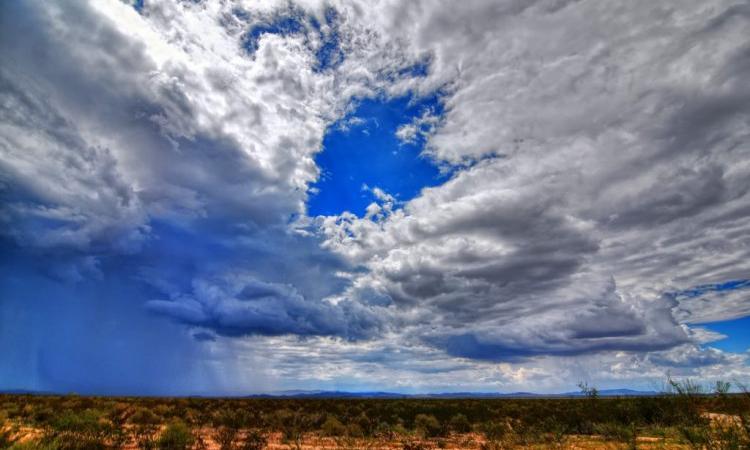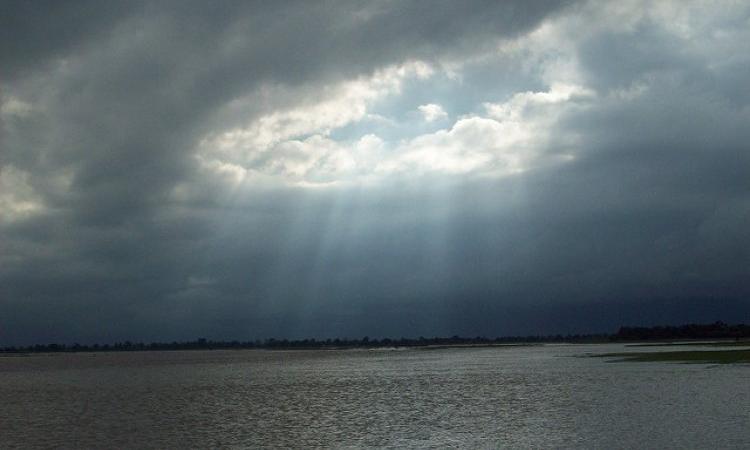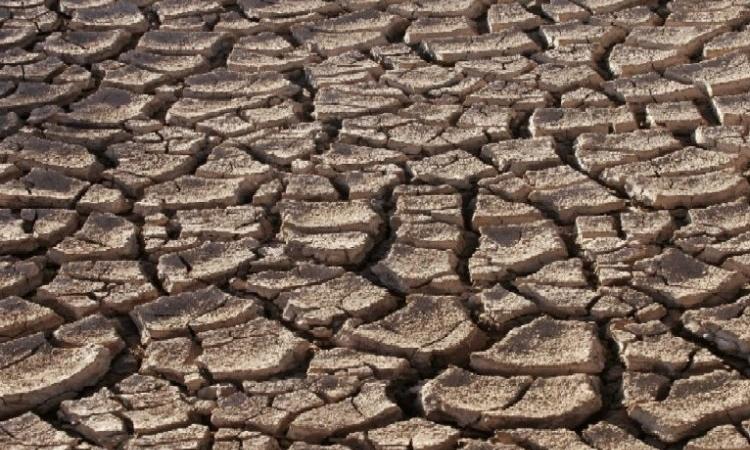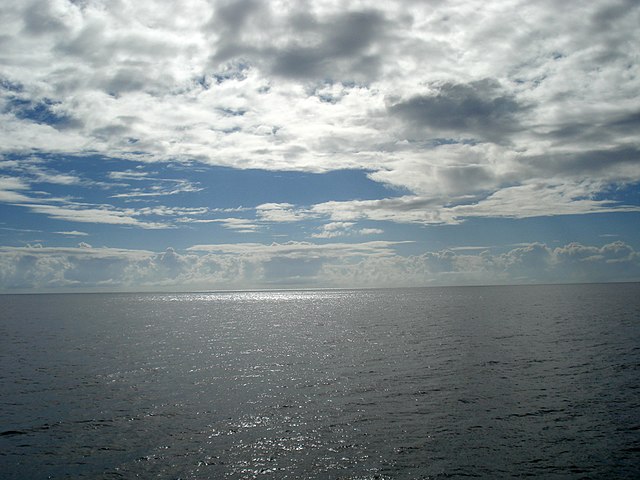
Climate change presents growing challenges to human health, safety, quality of life and the economy of the country. This book titled 'Assessment of climate change over the Indian region' by the Ministry of Earth Sciences (MoES), Government of India, edited by R. Krishnan, J. Sanjay, Chellappan Gnanaseelan, Milind Mujumdar, Ashwini Kulkarni, Supriyo Chakraborty and published in 2020 by Springer Open consists of 12 chapters.
These chapters describe the observed changes and future projections of temperature, rainfall, droughts, sea level rise, tropical cyclones and other extreme weather events over India and is a very important first of its kind national forecast on the impact of global warming on the climate in India. The book serves as a useful document for policy makers, researchers, social scientists, economists, and students alike.
There has been a rise in the global average temperature by around 1°C and these are more due to human induced anthropogenic changes rather than natural causes. What are its implications for India?
Climate over the Indian subcontinent is influenced by complex interactions between the atmosphere, ocean and land. Human interventions are adding fuel to fire and leading to increasing heat extremes, changing monsoon patterns and sea-level rise posing serious threats to lives and livelihoods among populations in the country. It is thus important to understand how and why the climate is changing across India and how these changes are expected to evolve in the future.
The Indian subcontinent can be divided into varied climatic zones due to its varied topographical and geographical features. A unique feature of the Indian climate is the Indian Summer Monsoon (ISM), produced due to seasonal migrations of the tropical rain belts associated with the Inter-tropical Convergence Zone (ITCZ), along with large-scale seasonal wind reversals.
In addition to monsoonal rains, areas in the western Himalayas (WH) also experience precipitation during the winter and early spring months from the Western Disturbances that originate in the Mediterranean region.
The Indian region is prone to a wide range of severe weather events and climate extremes, including tropical cyclones, thunderstorms, heat waves, floods, droughts, etc. The consecutive chapters discuss these events in detail.
Read the chapter here
The frequency of warm extremes over India has increased during the recent 30 year period i.e. (1986–2015). The frequency and intensity of warm days and warm nights are projected to increase further over India in the next decades, while that of cold days and cold nights will decrease.
The pre-monsoon season heatwave frequency, duration, intensity and areal coverage over India will substantially increase during the twenty-first century.
Read the chapter here for more details

There has been a decreasing trend in the all-India annual, as well as summer monsoon mean rainfall during 1951– 2015, mainly over the Indo-Gangetic Plains and the Western Ghats. The frequency of localised heavy rain occurrences over India has increased during 1951–2015.
Urbanisation, land use changes, as well as aerosols have a role to play in these heavy rainfall occurrences. The interannual variability of summer monsoon rainfall will further increase through the twenty-first century.
Read the chapter here for more details
The surface CO2 concentration in the western Indian region is increasing due to enhanced biospheric activities as well as the changes in nearby oceanic fluxes. Recent studies show that the carbon fluxes in Indian forests vary widely across the ecosystems.
Surface GHGs measurement sites in India are sparse in nature. In the absence of long-term observational records and a comprehensive modeling of biogeochemical processes, there is a limited understanding of the dynamics of GHGs variability in India.
Read more here
The aerosol loading over India has substantially increased during the recent few decades. The rate of increase in AOD is significantly high during the dry months of December–March. The aerosol radiative forcing over India shows wide spatiotemporal variability resulting from the non-uniform distribution of aerosol burden over the region.
The aerosol concentrations over the subcontinent are influenced by wind-driven desert dust, biomass burning, industrialisation, agricultural activities etc. Rapid growth in population, industrialisation, and urbanisation—over South, East, and Southeast Asia—has contributed to the significant rise in emissions producing different types of aerosols over the region.
The increase in anthropogenic aerosol loading in recent decades has led to solar dimming over the Indian landmass, affecting the energy balance at the surface and has been linked to changes in the hydrological cycle of the region. The long-term decline in southwest monsoon precipitation has been associated with anthropogenic aerosol loading over South Asia.
Read further here

The frequency and spatial extent of droughts over India has increased significantly during 1951–2015. An increase in drought severity is observed mainly over the central parts of India, including parts of Indo-Gangetic Plains. These changes are consistent with the observed decline in the mean summer monsoon rainfall.
At the same time, increased frequency of localised heavy rainfall on sub-daily and daily timescales has enhanced flood risk over India, especially in urban areas.
Climate model projections indicate an increase in frequency, spatial extent and severity of droughts over India during the twenty-first century while flood events are projected to increase over the major Himalayan river basins (e.g. Indus, Ganga and Brahmaputra)
Read more here
Chapter 7: Synoptic scale systems by Savita Patwardhan, K. P. Sooraj, Hamza Varikoden, S. Vishnu, K. Koteswararao, M. V. S. Ramarao et al
This chapter provides an assessment of observed and future changes in synoptic weather systems during boreal summer (i.e., monsoon lows and depressions) and winter to spring season (i.e., western disturbances)
Read more here
Long-term observations (1951–2018) indicate a significant reduction in annual frequency of tropical cyclones (TCs) in the North Indian Ocean (NIO).
However, an increase in the frequency of post-monsoon (October–December) severe cyclonic storms (VSCS) is observed in the NIO during the past two decades (2000–2018). The frequency of extremely severe cyclonic storms (ESCS) over the Arabian Sea has increased during the post-monsoon seasons of 1998–2018.
There has been a decline in number of thunderstorm days by 34 percent over the Indian region, while there is a rise in mini-cloudbursts along the west coast of India and along the foothills of western Himalayas.
Read more here
The rate of global mean sea level (GMSL) rise has increased in recent years due to human induced climate change. The Indian Ocean sea-level rise is dominated by the ocean thermal expansion, while the addition of water mass from terrestrial ice-melting is the major contributor to the GMSL rise.
Interannual to decadal-scale variability in the Indian Ocean sea level is dominated by El Niño Southern Oscillation and Indian Ocean Dipole events.
Extreme sea-level events are projected to occur frequently over the tropical regions and along the Indian coast associated with an increase in the mean sea level and climate extremes.
Read more here

The tropical Indian Ocean has experienced rapid basin-wide sea surface temperature (SST) warming, with an average rise of 1.0 °C (0.15 °C/decade) during 1951– 2015, over which period the global average SST warmed about 0.7 °C (0.11 °C/decade).
The SST warming is spatially non-uniform and about 90 percent of the warming can be attributed to anthropogenic emissions. The basin-wide non-uniform SST warming trend in the tropical Indian Ocean is to continue in the future, under both medium and high emission scenarios.
SST warming has very likely contributed to the decreasing trend observed in oxygen (O2) concentrations in the tropical Indian Ocean, and the declining trend in pH and marine phytoplankton over the western Indian Ocean. These trends are projected to continue with global warming.
Read more here
Chapter 11: Climate change over the Himalayas by T. P. Sabin, R. Krishnan, Ramesh Vellore, P. Priya, H. P. Borgaonkar, Bhupendra B. Singh et al
The Himalayas and the Tibetan Plateau have experienced substantial warming during the twentieth century. The warming trend has been particularly pronounced over the Hindu Kush Himalaya (HKH) which is the largest area of permanent ice cover outside the North and South Poles.
The annual mean surface-air-temperature in the HKH has increased at a rate of about 0.1 °C per decade during 1901–2014, with a faster rate of warming of about 0.2 °C per decade during 1951–2014, which has been due to anthropogenic factors. Higher elevations (> 4000 m) of the Tibetan Plateau are experiencing stronger warming, as high as 0.5 ° C per decade.
Several areas in the HKH are showing declining trends in snowfall and retreating glaciers while parts of the high-elevation Karakoram Himalayas are experiencing increased wintertime. While future projections indicate significant decrease of snowfall in several regions of the HKH, high-elevation locations (> 4000 m) in the Karakoram Himalayas are projected to experience an increase in annual precipitation during the twenty-first century.
Read more here

The rapid changes in India’s climate are projected to increase stress on the country’s natural ecosystems, agricultural output, and fresh water resources, while also causing damage to infrastructure. These can have serious consequences for the country’s biodiversity, food, water, energy security, and health.
This calls for rapid, informed and far-reaching mitigation and adaptation measures and need inclusion of detailed, regional-scale climate change risk assessments for region and sector-specific mitigation and adaptation measures to reduce vulnerability to climate change.
The climate change adaptation and mitigation response needs to place greater emphasis on widening observational networks, sustained monitoring, expanding research on regional changes in climate and their impacts, development of integrated, multiscale models that are capable of aiding predictions, scenario synthesis and providing information required for vulnerability assessment, and by continued investment in education and outreach programs including national and international collaborative partnerships
Read more here
The book and all the chapters are open access and can be downloaded from here
/articles/assessment-climate-change-over-indian-region